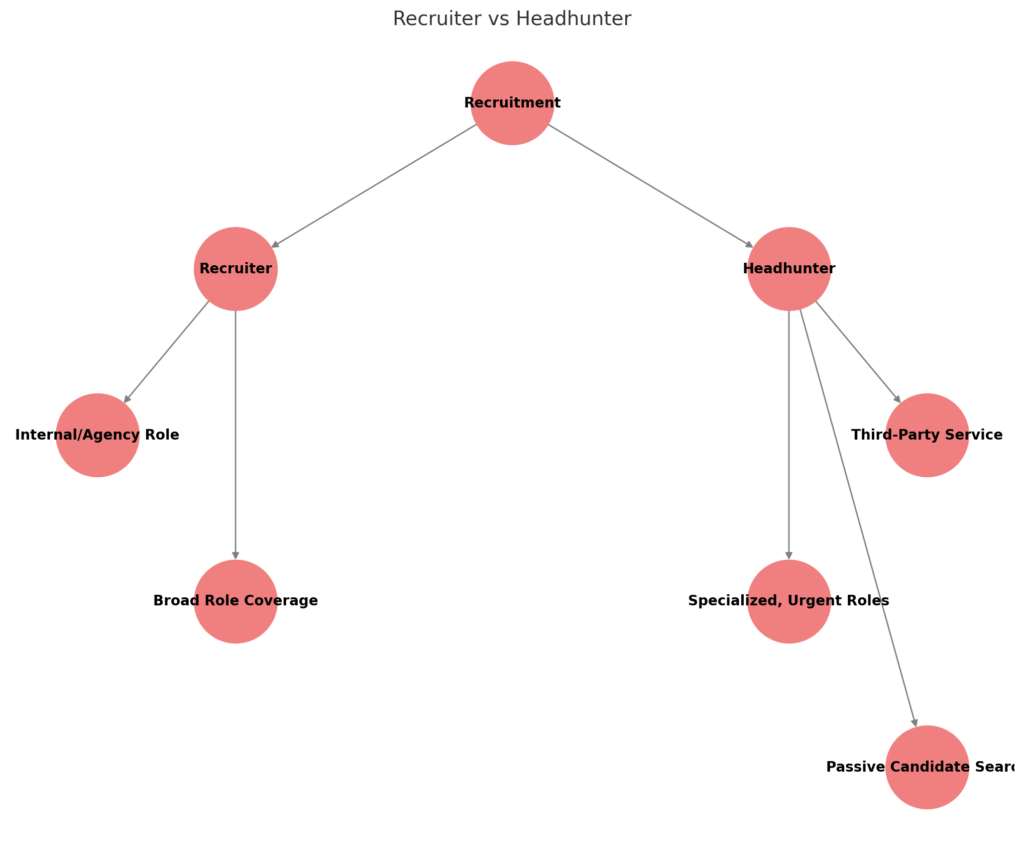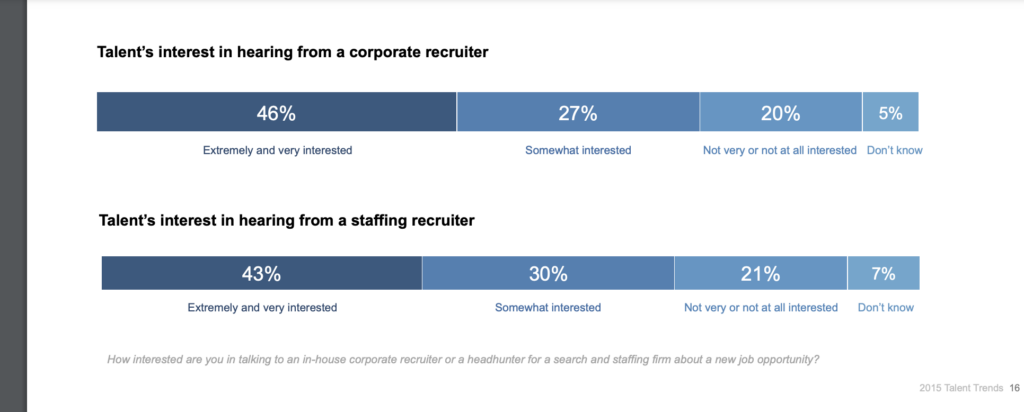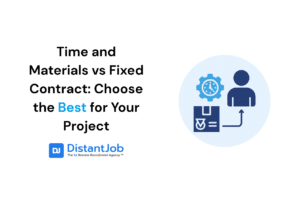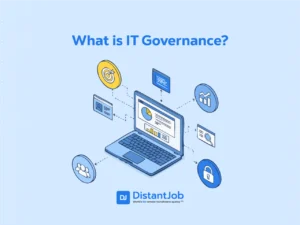Headhunting and recruitment are two completely different talent acquisition methods. Headhunting is the process where a specialist finds and approaches the candidate. The best headhunters focus their resources on hiring people who are not necessarily looking for a job but have the right skills, with the right experience, and are the right fit for your company culture.
Recruitment, on the other hand, is a completely passive approach as companies advertise a job and wait for people to come to them. This type of recruiting is useful for lower-level and mid-level positions. But for those who want to hire people who better match both the skills and the culture of their organization, headhunting is far more effective.
In this blog, we’ll begin by defining headhunting and recruitment and highlighting the main differences between the two. I’ll explain how these services work and whether they can function in unison.
Is a Headhunter the Same as a Recruiter?

A recruiter’s role is different than a headhunter’s. A recruiter usually works inside the company or in an agency and can hire across different hierarchies. For the most part, the recruiter deals with people who are applying for jobs.
A headhunter is a third-party person or company that specializes in finding people who are often not looking for a job, have better skills, are more serious, and are hired for top-level positions. They are used for urgent positions, and they do not wait for candidates to approach them. A good headhunter’s biggest asset is his or her network, which helps find real talent not found through advertising, considering that 85% of roles are found via networking, according to LinkedIn’s Talent Solutions.
What is Headhunting
Headhunting is the process of talent acquisition in which the headhunter identifies potential candidates for the company looking to hire. It’s a more targeted way to search for people with a specific set of skills that the company might be struggling to hire for.
The reach of any headhunter, be it an individual or a recruitment agency, is to find people who match the job requirements. They coordinate with hiring managers, search for potential candidates, and connect them with the company that hired them.
Pros and Cons of Headhunting
Pros
- Access to the best talent. Headhunting provides organizations with a golden opportunity to access top-notch skilled talent in the market.
- Tailored recruitment. Headhunters are better able to tailor their search to match the organization’s specific requirements and culture.
- It is less costly than other recruitment methods, as the process is usually quicker and more targeted.
Cons
- Headhunting relies on a limited pool of candidates who actively or passively seek out new opportunities
- The headhunting process can damage current employer-employee relations, especially if the target has direct contact with the headhunter.
- Headhunters may not always have a deep understanding of the hiring company’s culture, values, and specific needs, leading to suboptimal hires.
What is Recruiting
Recruitment is the process of finding, attracting, screening, and selecting qualified candidates for job openings within an organization.
The recruitment process generally starts by identifying the roles that need to be filled. The recruiter then creates appropriate job titles, describes the job responsibilities, and identifies the necessary skills needed for the positions.
Next, they advertise those positions and move on to the next steps of interviewing and filtering candidates.
Pros and Cons of Recruitment
Pros
- Recruitment provides higher quality candidates by allowing for a thorough screening process.
- There is a larger pool of candidates already existing, either from the database or from job boards which reduces vacancy periods and boosts operational efficiency.
- Recruitment may promote business growth and innovation by bringing in fresh perspectives and skills
Cons
- In most cases, you need to train new applicants on their roles which could impact budget allocation and resource utilization
- There’s high competition for top talent which can lead to challenges in attracting and retaining skilled individuals.
5 Key Differences between Headhunting and Recruitment
Both headhunting and recruitment have the same purpose: to find and attract the best candidate for your company. But the approaches are very different.
Here are five key differences between the two:

1. Approach
Headhunting is more proactive and targeted, focusing on seeking out passive high-skilled candidates who are not actively looking for new opportunities. Recruitment involves a rather different approach, taking a reactive stance by posting job ads on social media, Job boards, or recruitment agency websites.
While headhunters and recruiters do similarly well at capturing candidate interest, slightly more candidates said they would be extremely or very interested in hearing from a corporate recruiter than a staffing firm recruiter aka headhunter (46% vs. 43%). Although the difference is small, it’s possible candidates may be more likely to respond if the reach-out is from an employer versus a third party.

2. Objective
The primary goal of headhunting is to fill specialized and senior-level positions such as CEO or CFO within an organization. On the contrary, recruitment aims to build a talent pool to meet both an organization’s immediate and future staffing needs.
3. Process
Headhunting relies heavily on research, industry networks and direct outreach to identify and engage with potential candidates. Recruitment revolves around activities such as posting job ads, reviewing resumes, and conducting interviews with applicants who respond to job posting.
4. Outcomes
The key outcome of headhunting is the rapid placement of the highly sought-after talent, addressing immediate staffing requirements. In contrast, recruitment tends to yield a broader talent pool over time, offering a wider selection of candidates but at a slower pace.
5. Best for
Headhunting excels in filling niche, executive-level positions where specific expertise and experience are crucial. On the other hand, recruitment is better suited for high-volume hiring needs, particularly for entry to mid-level roles where a larger applicant pool may be beneficial.
For instance, an executive headhunter would be more beneficial to a rapidly expanding Tech Startup looking to hire an IT Specialist. Even if the ideal candidate isn’t thinking of switching jobs, the headhunter can use their industry connections to find and hire them discreetly.
On the other hand, a store that wants to hire store personnel would be better served advertising the positions and using a conventional hiring procedure. Ultimately, the choice of headhunting vs recruitment boils down to the specific hiring needs of the organization.
By understanding the key differences, talent leaders can select the most effective approach to secure top talent and drive business success.
Can Headhunting and Recruitment Work Together
Headhunting and recruitment are often two distinct approaches to talent acquisition, but they can actually work together to help companies find the best candidates.
HR departments and top recruitment agencies often combine the two strategies, casting a wider net that raises the probability of finding the perfect fit for the open roles.
For example, at DistantJob, we combine recruitment with over 15 years of global remote headhunting experience at your service.
The agency boasts of a global headhunting team embedded in local developer communities, speaking to developers in their language and making it easier to connect with the right talent.
Conclusion
The best option to hire new employees depends on the needs of the company and the specific job.
Headhunting would be the best choice when you’re looking for someone with a specific skill set or type of experience. On the other hand, recruitment may be the better option if you are looking for a broad range of applicants or want to build a talent pool.
At DistantJob, we excel at both headhunting and recruitment, allowing you to attract the best possible candidates for your organization. Our approach is simple: Make an inquiry, and we’ll start the recruitment process by headhunting, soliciting, interviewing and screening until we find the ideal candidates who would love to work for you.
Contact us today, and let’s take care of your organization’s headhunting and recruitment needs.




